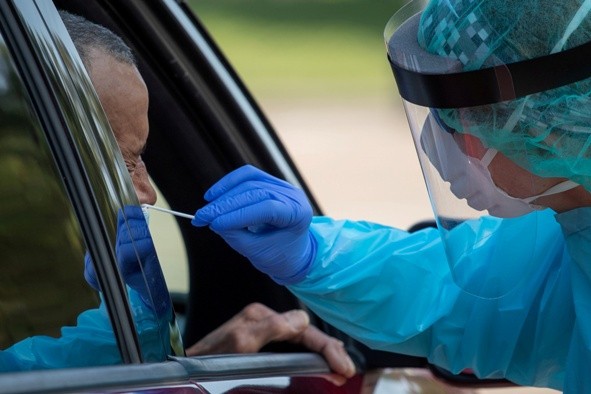CDC Drops Controversial Testing Guideline that Prompted Backlash

The Centers for Disease Control and Prevention (CDC) dropped a controversial piece of COVID-19 testing guideline yet again.
Last month, the CDC said people didn't need to get tested if they don't feel sick. But now, they took back the testing guideline once more.
They took a U-turn in the testing guideline after it dropped the existing rule that anyone who has been in close contact with an infected should not get tested.
"Due to the significance of asymptomatic and pre-symptomatic transmission, this guidance further reinforces the need to test asymptomatic persons," the CDC said. The guidance will include close contacts of a person positive of COVID-19, CNN reported.
CDC defined "close contact" as being within six feet of a person confirmed to have COVID-19 for at least 15 minutes.
Last August 24, the site said that if someone were in close contact with a COVID-19 infected, "but do not have symptoms," testing was not needed. There were some exceptions, such as vulnerable groups and health care providers.
State or local public health officials were also recommended to get tested under the past guideline.
The agency warned people to get tested with public health officials or healthcare providers. They also called the changes a "clarification."
They declined additional comment for news sites.
Why Change Back?
That change from the CDC has set off criticism from health experts then. They could not understand why the nation's top public health agency would say such a thing amid the pandemic, noted Associated Press.
Studies have shown that people can carry the virus even without display of symptoms, said CNBC. This covers patients who are pre-symptomatic or asymptomatic.
It was a core element in keeping outbreaks from taking place.
Public health experts and officials at the World Health Organization have stressed the importance of testing time and time again. They said people do not have to show symptoms to cut off the chain of transmission.
Experts also said that a large portion of those infected with COVID-19 shows no symptoms.
Dr. Silvia Chang, a pediatric infectious disease expert at Brown University, said the August guidance was "not consistent with the basic principles of controlling an epidemic." She also lauded the change announced on Friday.
Health officials at the CDC are still dodging questions related to last month's change of guidance. Some outside individuals believed political appointees in the Trump administration forced the agency.
Dr. Brett Giroir, Asst. Sec. at the Department of Health and Human Services said many federal officials outside the CDC were involved. They made "lots of editing, lots of input," as Giroir put it.
He said it was hard to link the final say in the guidelines to any one source.
The New York Times said in a report that the August guidance was placed on the website over agency scientists' objections. The report was released on Thursday through unnamed sources and internal federal documents.
CDC chief Dr. Robert Redfield issued a statement shortly after the controversy took off. But it did little to clarify the changes that were happening to the agency's testing guidelines.
The primary intent of it seemed to assure state health officials that they still recommend close contact testing. This is despite the website guidelines saying it was not necessary.
Check these out!
Experts Worried About New CDC Testing Guidelines, 'Change in Policy Will Kill'
5 Foods to Help You Fight Vitamin D Deficiency
Public Losing Confidence in FDA as Coronavirus Vaccine Nears
Subscribe to Latin Post!
Sign up for our free newsletter for the Latest coverage!
© 2025 Latin Post. All rights reserved. Do not reproduce without permission.















